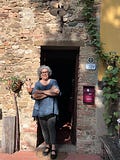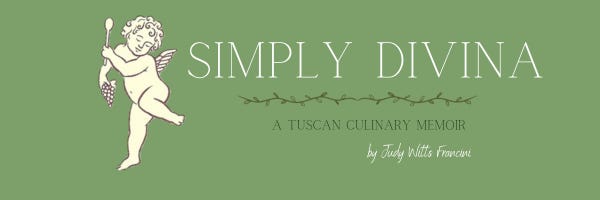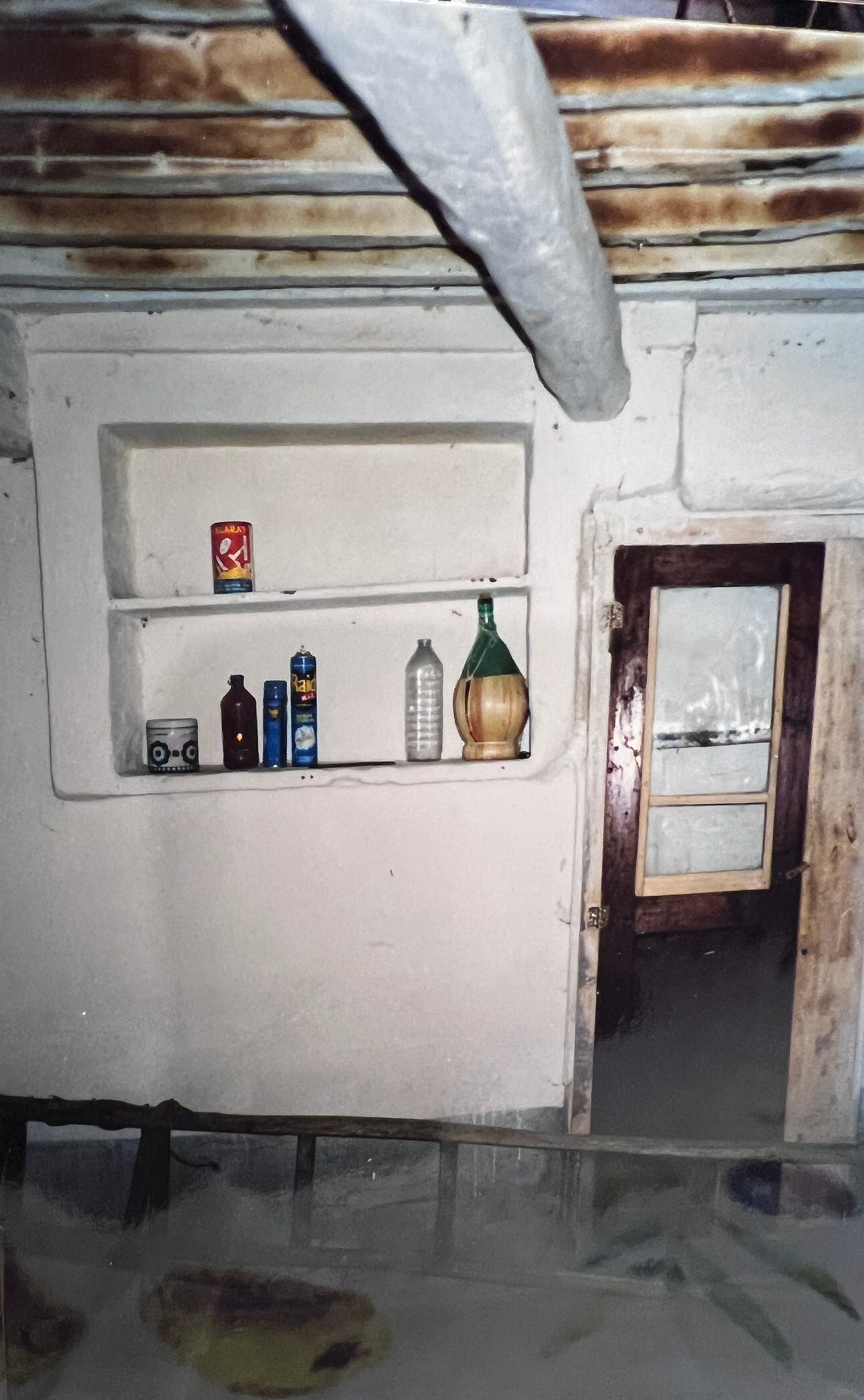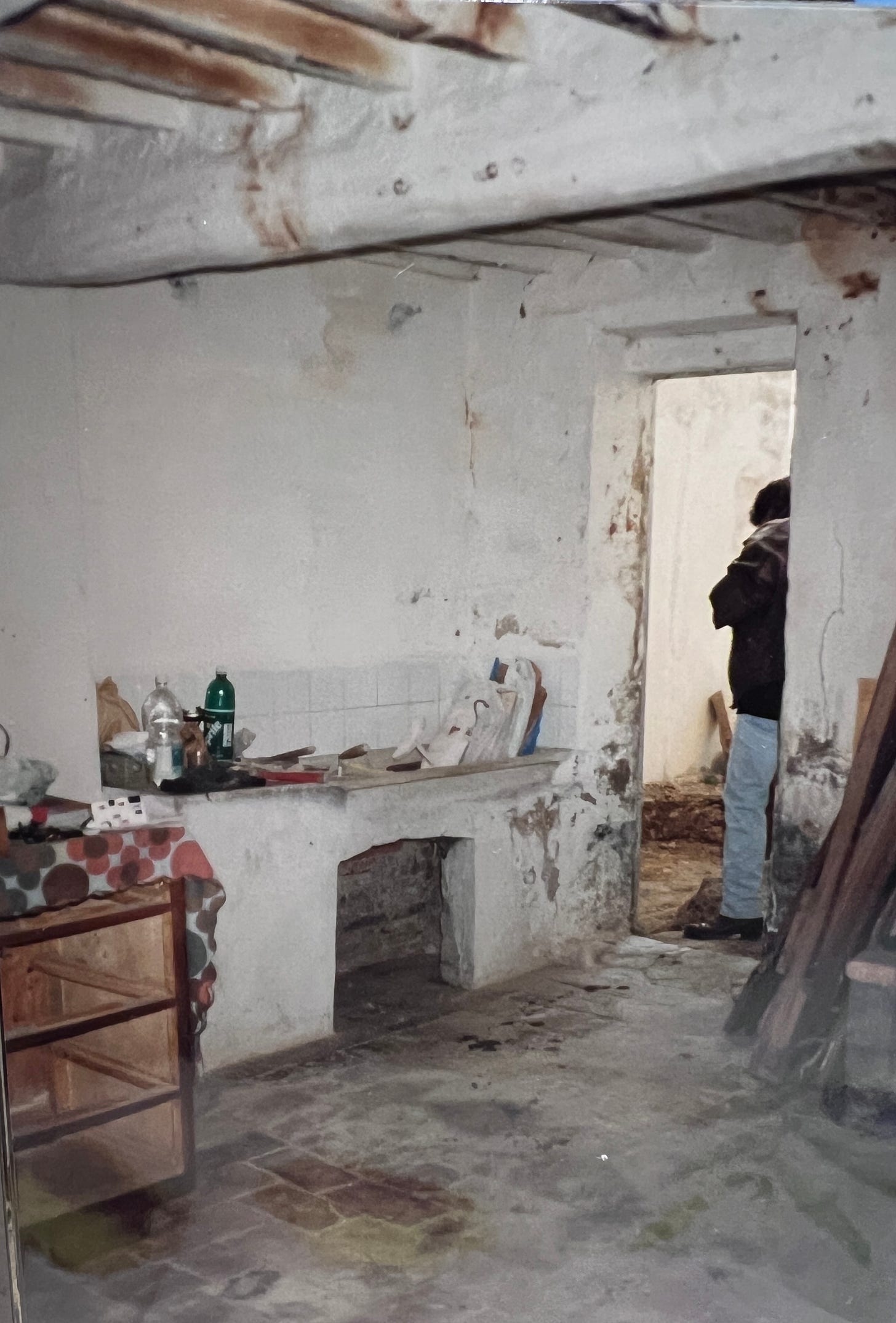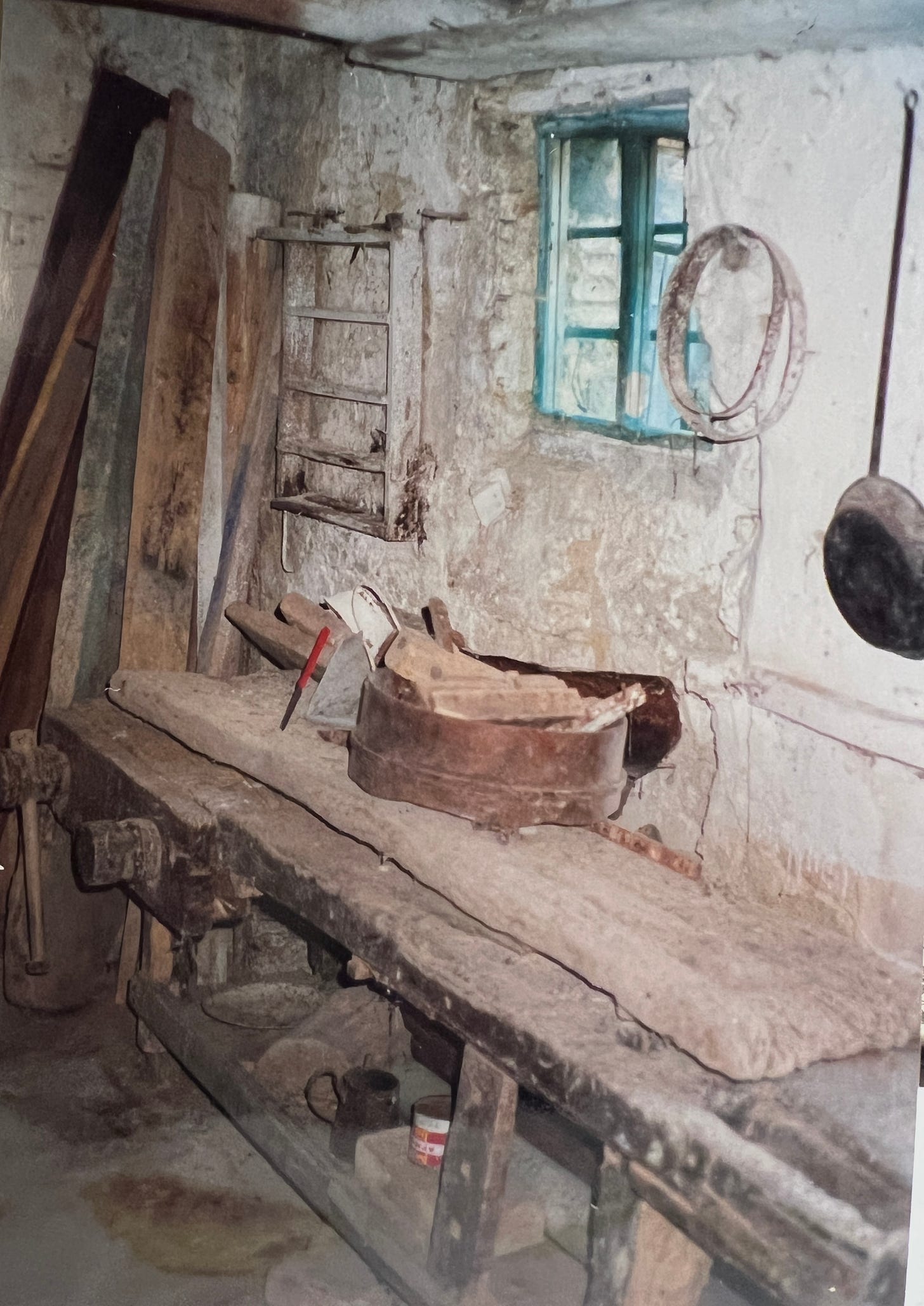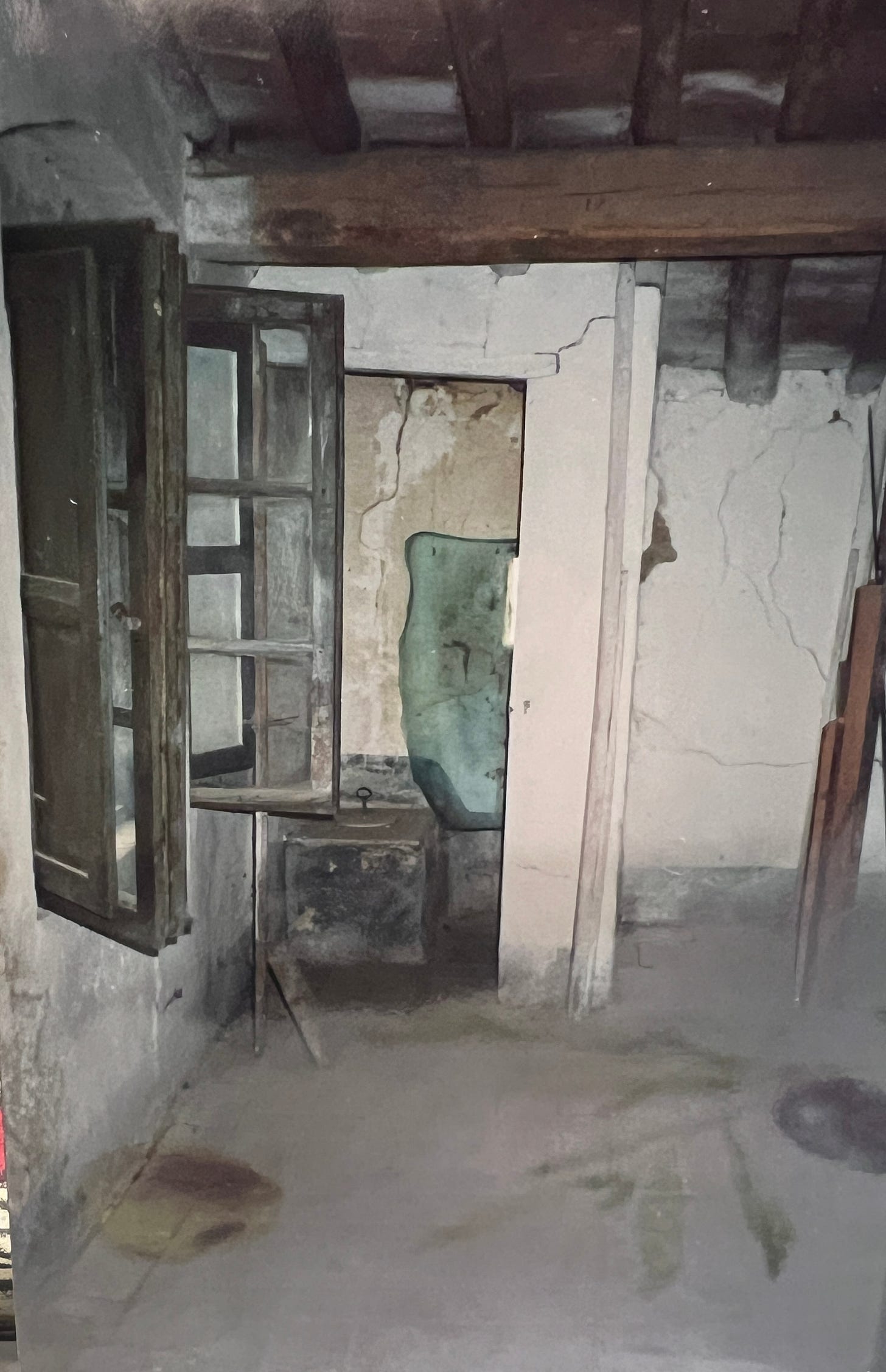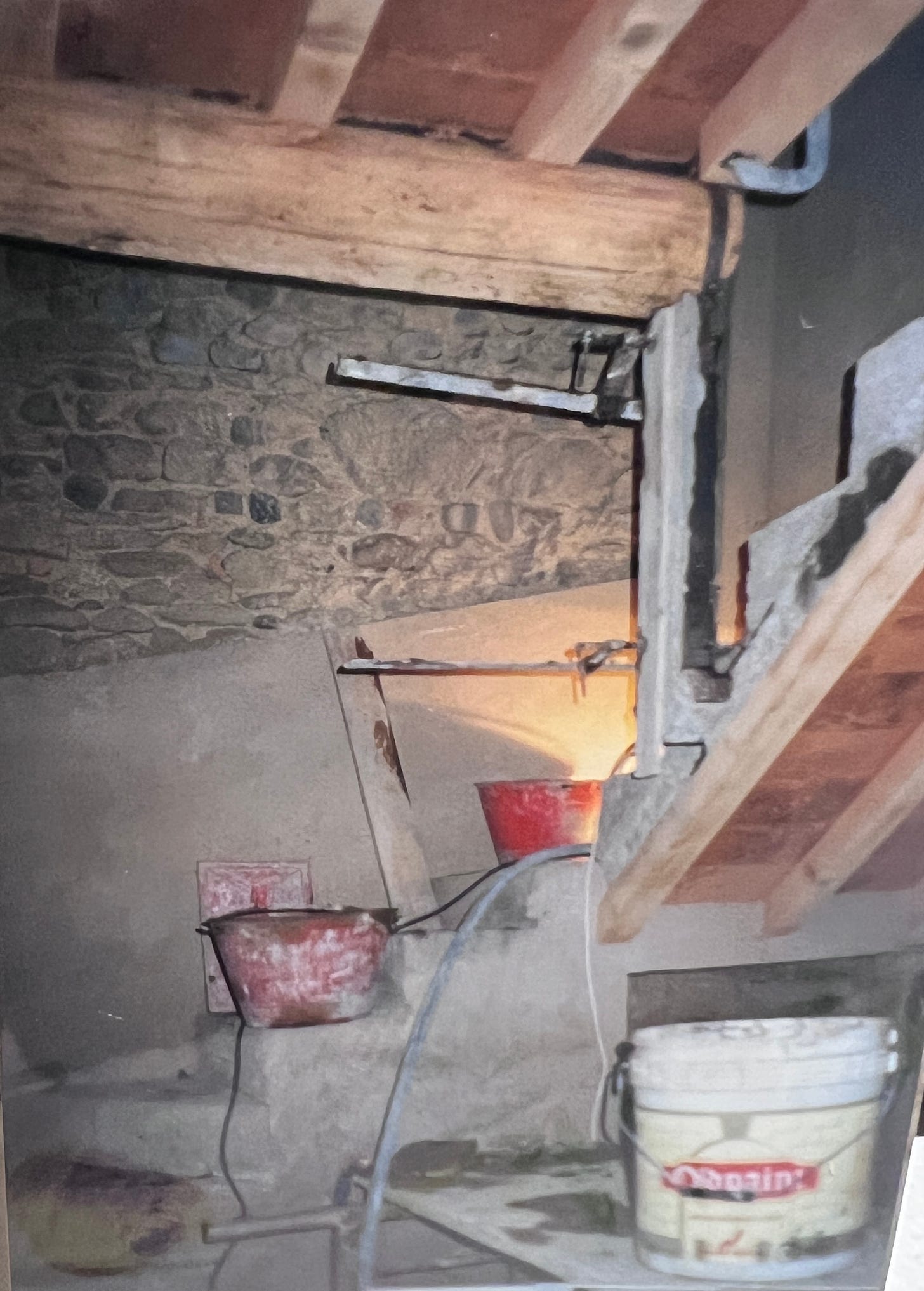Welcome to my tenth monthly post of my culinary memoir:
Simply Divina: Becoming Italian One Recipe At A Time.
Thank you for subscribing, I appreciate the love.
Each month, I post a newsletter open to everyone. This year, for the paid subscribers, I am posting a memoir, then one on the Italian Pantry, and a post about my mentors.
When you become a paying subscriber, you have access to:
-All the archives
-Markets of Italy: 12 guides to 12 cities and their markets ( on Thatch app)
-My ebook: Secrets From My Tuscan Kitchen.
Cook along with me and become a little more Italian every day!
Each month, I post a newsletter open to everyone. This year, for the paid subscribers, I am posting a memoir, then one on the Italian Pantry, and a post about my mentors.
It takes a village to dive deep into a new culture and make it home.
Starting over in a new country at 30, not speaking the language was a huge challenge. Before I could get a job, I would have to speak Italian. Slowly, I mastered the language and got work, first as a pastry chef and then opening my cooking school.
It's hard to remember life before the Internet and, of course, before Facebook and Instagram. I built my cooking school clientele slowly, starting with teaching college students in study abroad programs and then finally offering market tours to the public.
I took out an ad in Wine Spectator magazine's special edition on Italy. Bingo! At the time, no one was offering one-day cooking classes or market tours.
Years before, when I was living in Athens, Greece, someone told me if I was looking for something and couldn’t find it, there was a need for it. Personally, I didn’t want to go on a culinary vacation in a castle; I wanted to be downtown at the market, shop, and cook, so that’s what I offered. Clients could take a single market-to-table cooking class or, on Mondays, a market tour and lunch out.
I joined a culinary association and attended conventions in the USA to meet other cooking teachers and cookbook authors and began creating weeklong programs for their clients. I would plan and accompany the schools around Tuscany and beyond.
My favorite part is researching the different regions of Italy and creating the programs.
Now that my work was growing, I wanted to buy a house. Florence was too expensive.
Italy had the lira. When I arrived, a dollar was 2,000 lira. By the time I was ready to buy a house, it was a 1:1 ratio. I didn’t have any savings, but my mom offered to co-sign on a loan for me, and my husband was ready to retire from being a cab driver.
In Italy, as in some other places, you own your license. He had bought his for 10,000 17 years before and could sell it for 100,000 lira. He would buy the house, and I would pay for restoration with the money from the loan. We were set. Andrea’s family had not owned a home. His mom’s family had a home given to the males in the family, and the females got nothing. Interesting.
Little did we know we were headed into Dante’s inferno! The third ring of hell.
I was in charge of house hunting and filtering out things, and I only showed Andrea places I was considering. It was so stressful. My idea was to start with a smaller place, fix it up, and then sell it to buy a larger place where I could also teach classes and host friends.
Sounds good, right?
Italy also has a law allowing you to move your things over “taxfree” for the first house.
Location was also important. I wanted to live in a town with a train so I could commute to Florence to work and be within an hour of town.
We finally settled on a third of a farmhouse outside the village of Certaldo, not far from San Gimignano.
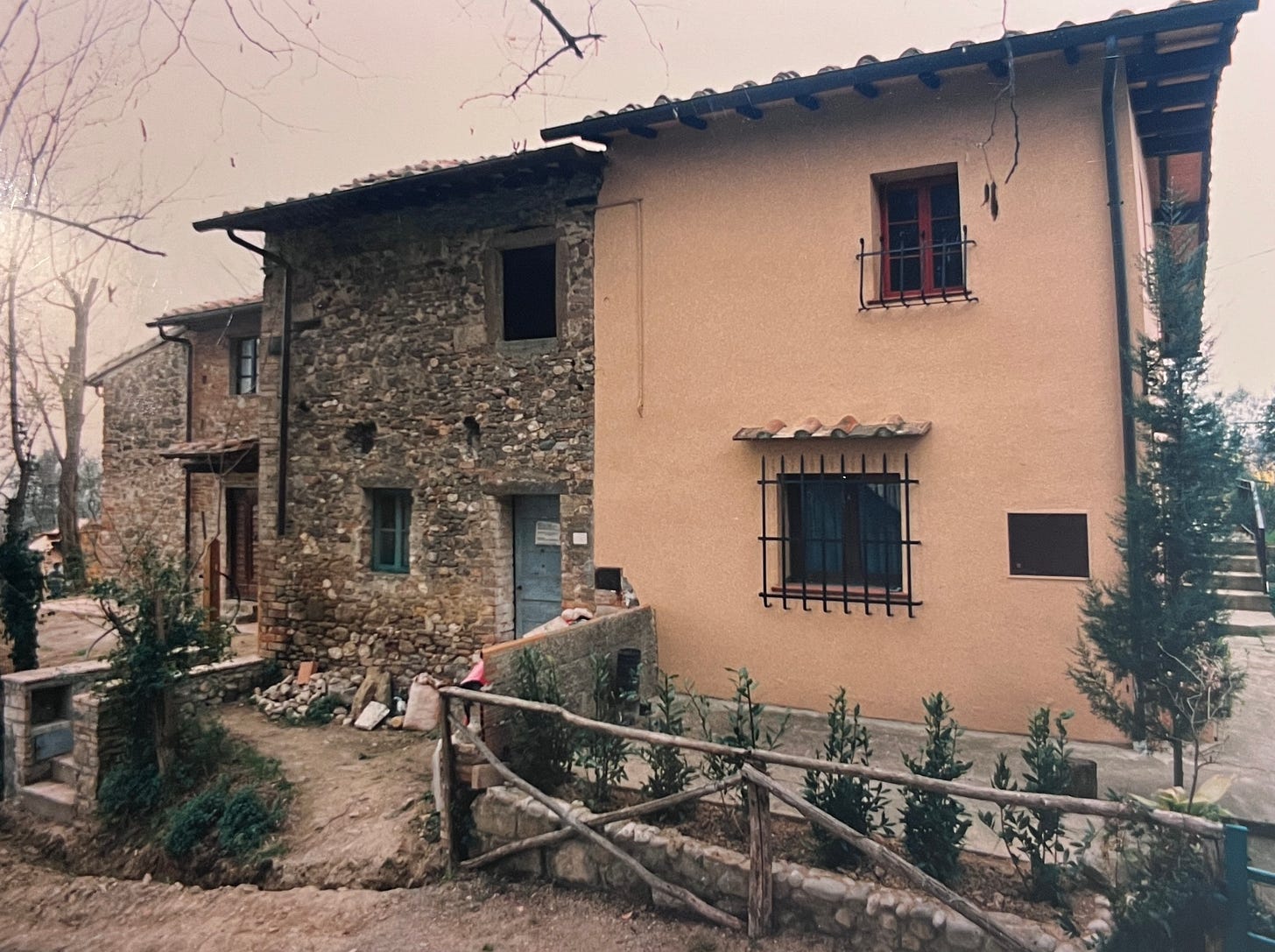
We bought the house in 1992. The red tape is complicated. At the sale signing, the older woman we bought the house from started crying because she didn’t realize she had to pay taxes on the sale. She and her sister had split the house, and both sold. They also had to pay back taxes before they could sell the homes.
I won’t go into all the red tape, but I recommend having an architect and lawyer look at everything before buying.
We hired an architect who was a friend in Florence, knowing we could trust him. We hired a friend of a friend to restore the house. Knowing what I know now, I would hire someone from the village.
The house was ancient and only had one light bulb and one tap for water.
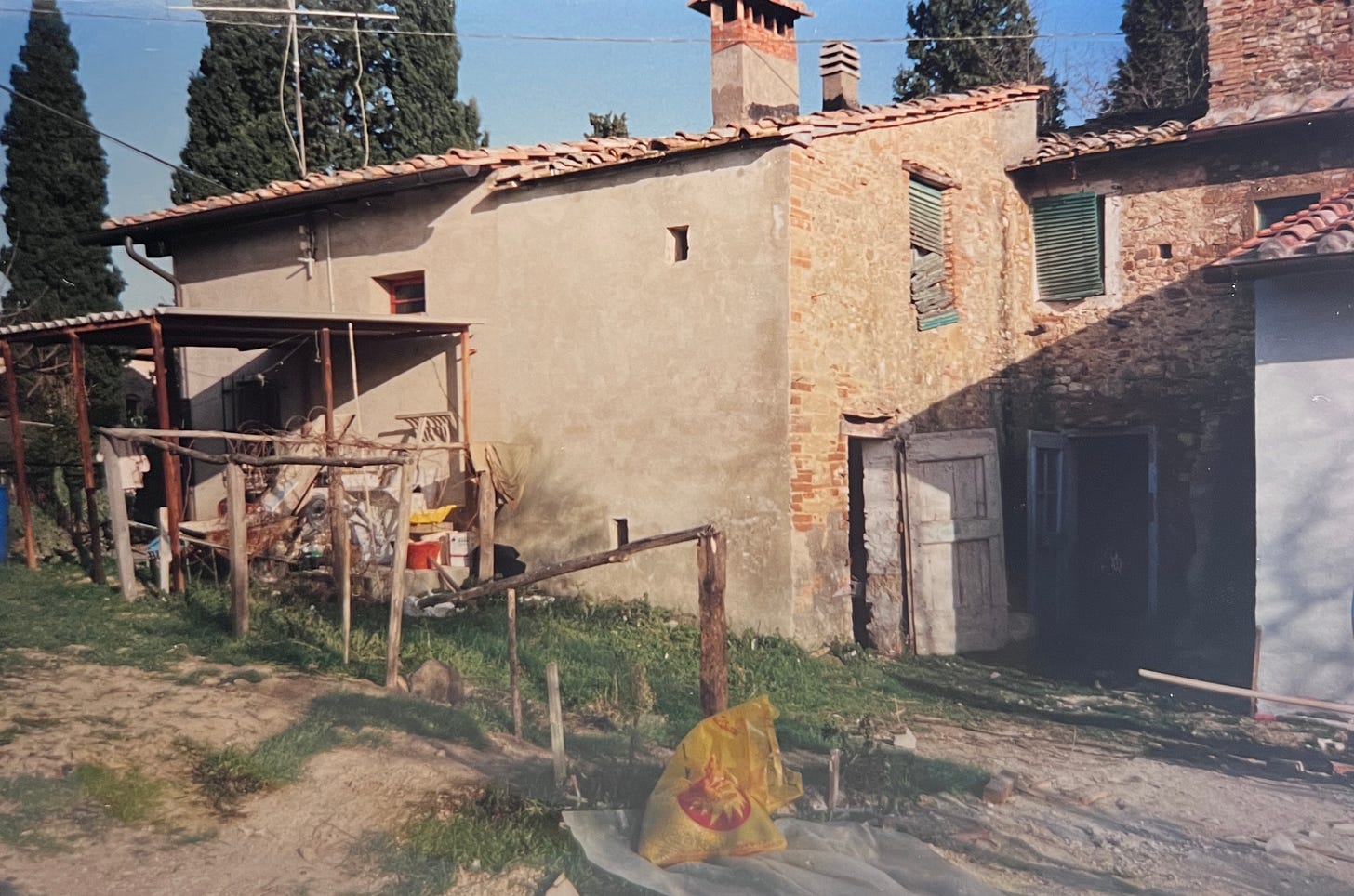
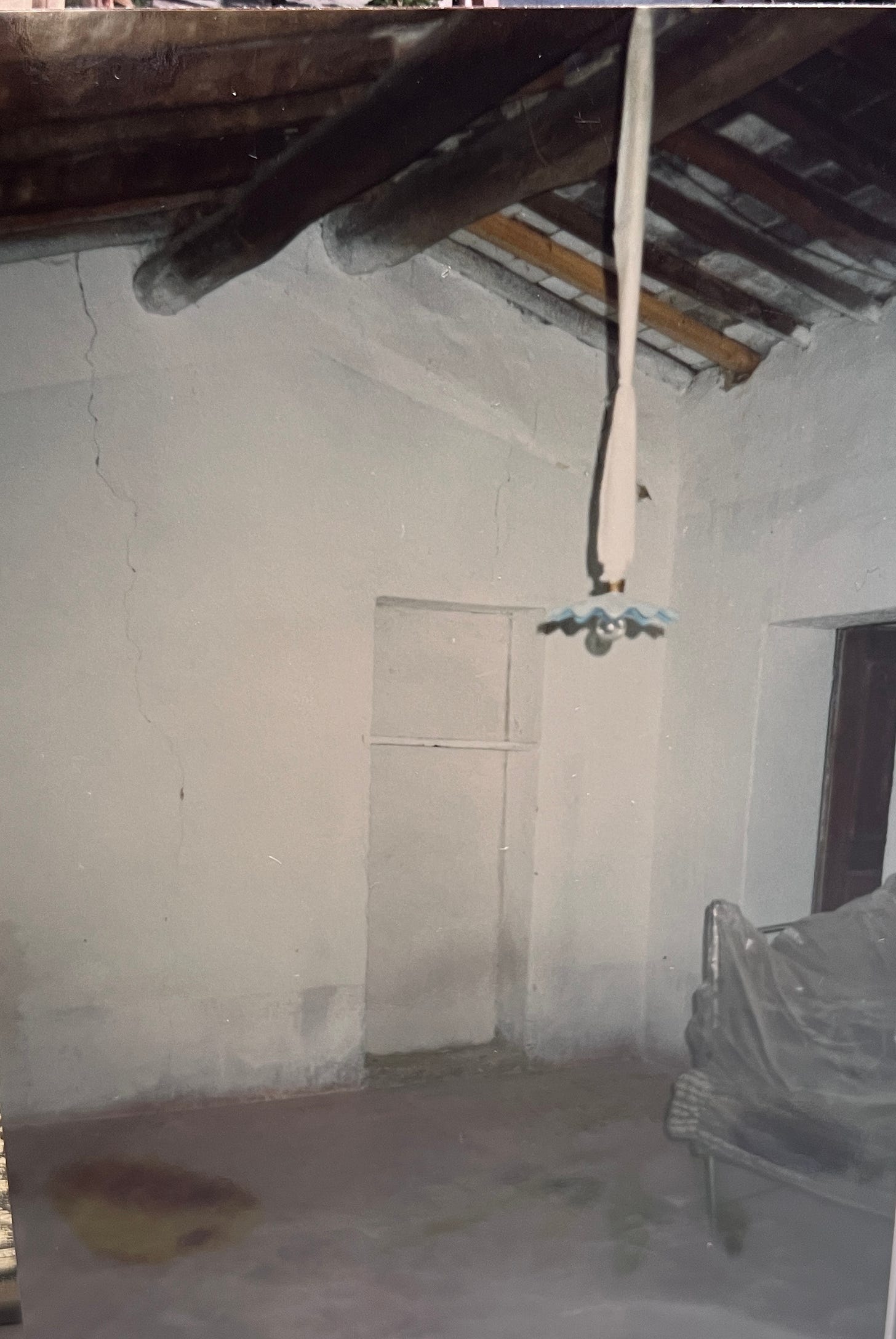
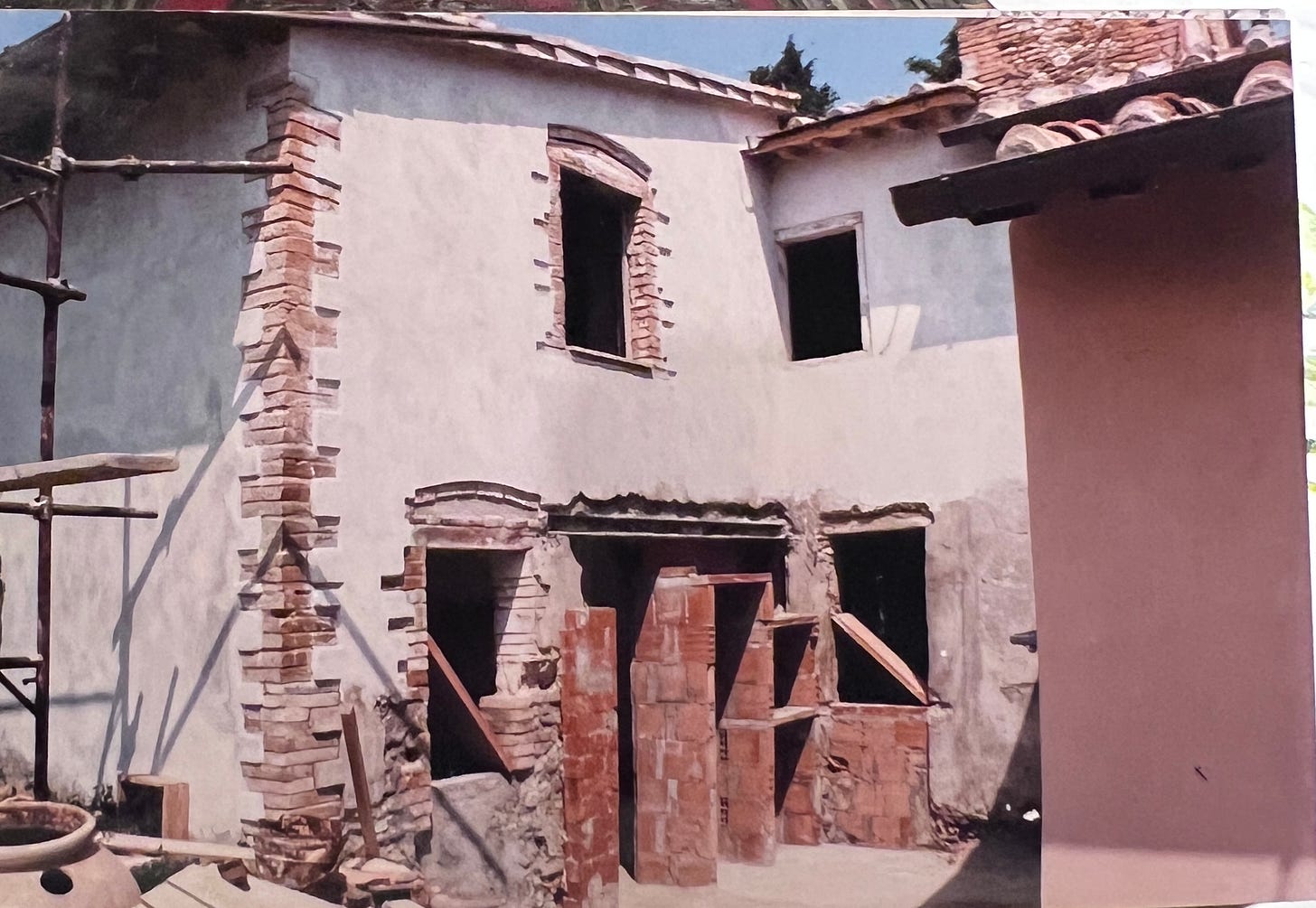
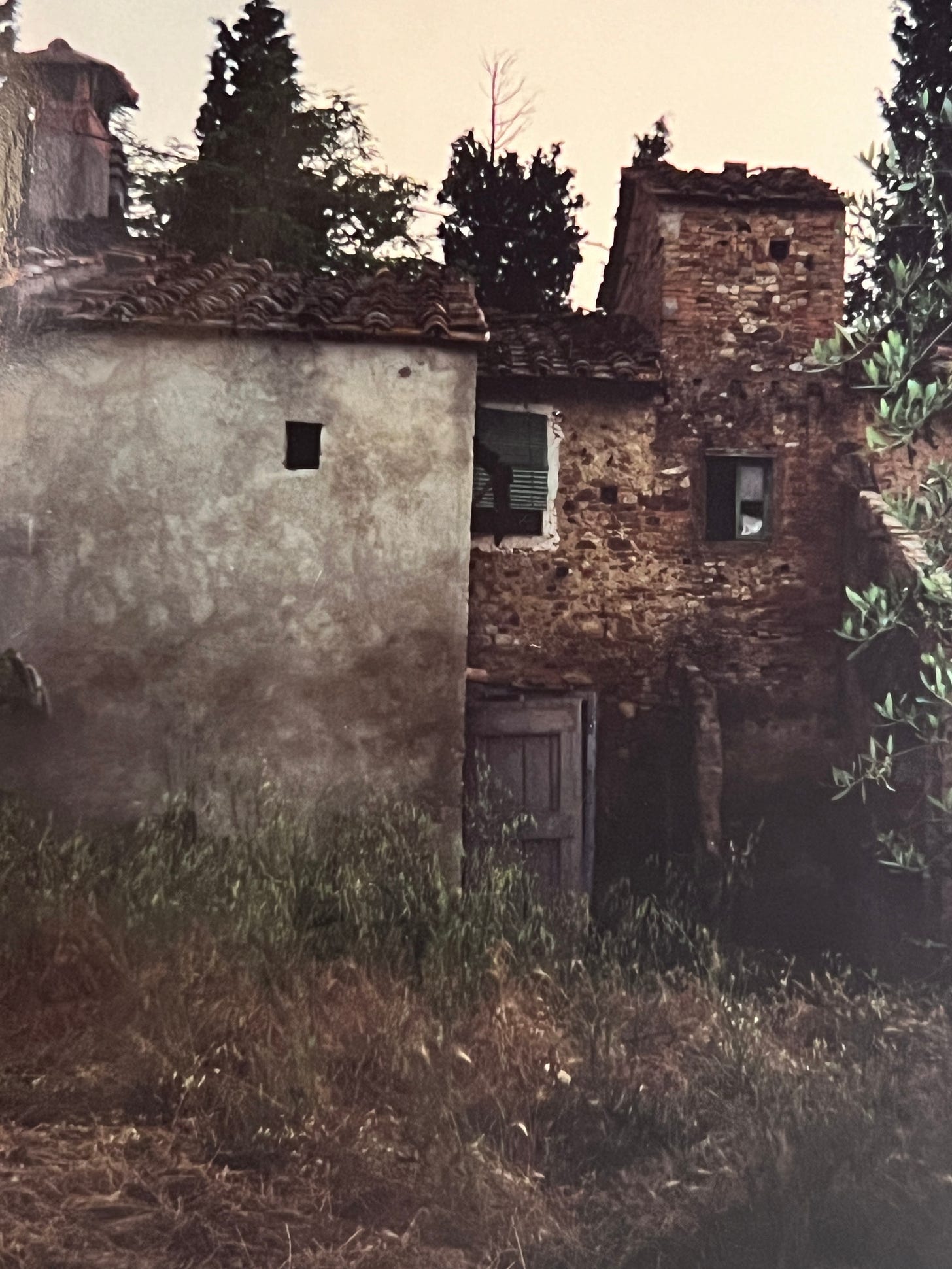
Work was slowly going forward. There was a vision. Downstairs would be the living room area, a small library space with a sofabed ( guest room), and a bath. Upstairs an office space, a large bedroom, and a large bathroom with a built-in closet.
We would close in the outside courtyard to make it a kitchen. We had bought everything to put on the roof and installed all the pipes for heating, water, and built in appliances. There was a small storage space out there that had lost its roof which our neighbors had knocked down when they enlarged what had been a pig stye and made it into a large family room.
They always say, it’s easier to ask forgiveness than permission.
That came back to bite us in the butt.
While restoring the house, the Italian government was cracking down on corrupt politicians in Tangentopoli. One of the politicians had escaped to Morocco, which caused the government to crack down on all building going on.
We also just had all the wood delivered to close in the courtyard, which was to be done that week. However, the man working on the restoration had to leave work for an operation on his son’s heart, so the work was put off for a week.
That week, our small town sent out the “building police” to control what was happening.
The first problem was that we had turned a door into a window. Then they started looking at every detail. We didn’t have a permit to close in the courtyard, but if we had done it, there would have been a fine; they would not have made us tear it down.
The brick floor in our house was set on dirt. We dug it up and created an airspace below to avoid moisture; they came to control it when we dug it up.
For them, we were expanding the inside volume of our house. That was ridiculous. We were busted.
This led to our nightmare from hell.
When I read Under the Tuscan Sun, I couldn’t get through the book as it seemed impossible that she restored a huge villa in such a short time. Now I know the villa was in pretty good shape and not falling apart. #notfrancesmayes
I should have bought something that needed a new bathroom and kitchen and paid more for the house.
We had to have our architect create three sets of plans to get our new permits.
How the house looked when we bought it
What it looked like now.
What the final plans were.
When we brought the plans in, they would start to look at the first set. The city planner saw something he didn’t understand on page three, perhaps a missing measurement, and we had to take the plans to our architect and have him get the right information. Then we turned the plans back in and they have three months to replay.
Three months later, he called us to get more information, on page 10. He never looked at it all together.
This went on for 8 years.
Someone took pity on us; they let us know when the city planner was going on vacation and to represent the plans while he was gone…. and they were approved.
We hired a new team to finish the work on the house. He was local and so fabulous. After all these years, if we have any questions we still go to him.
Restoring an old home in Tuscany has many rules, including what color tiles and houses can be. We left the front of the house in stone and plastered the back, where we had to dig into the stones to put in the tubing for the water pipes. We had to remove all the floor tiles as they were cracked, and we replaced them with newer tiles but still the traditional local bricks.
When the work started again, I had to make my kitchen inside the house and lost all our work in the courtyard. The water pipes, electrical work and the built in space for appliances.
During this time, I was running my cooking school and from 1998-2000 working at Dario’s. Needless to say, the restoration ended up costing us a lot more money, as it was taking so long. We also had to pay fines.
I exploded!

